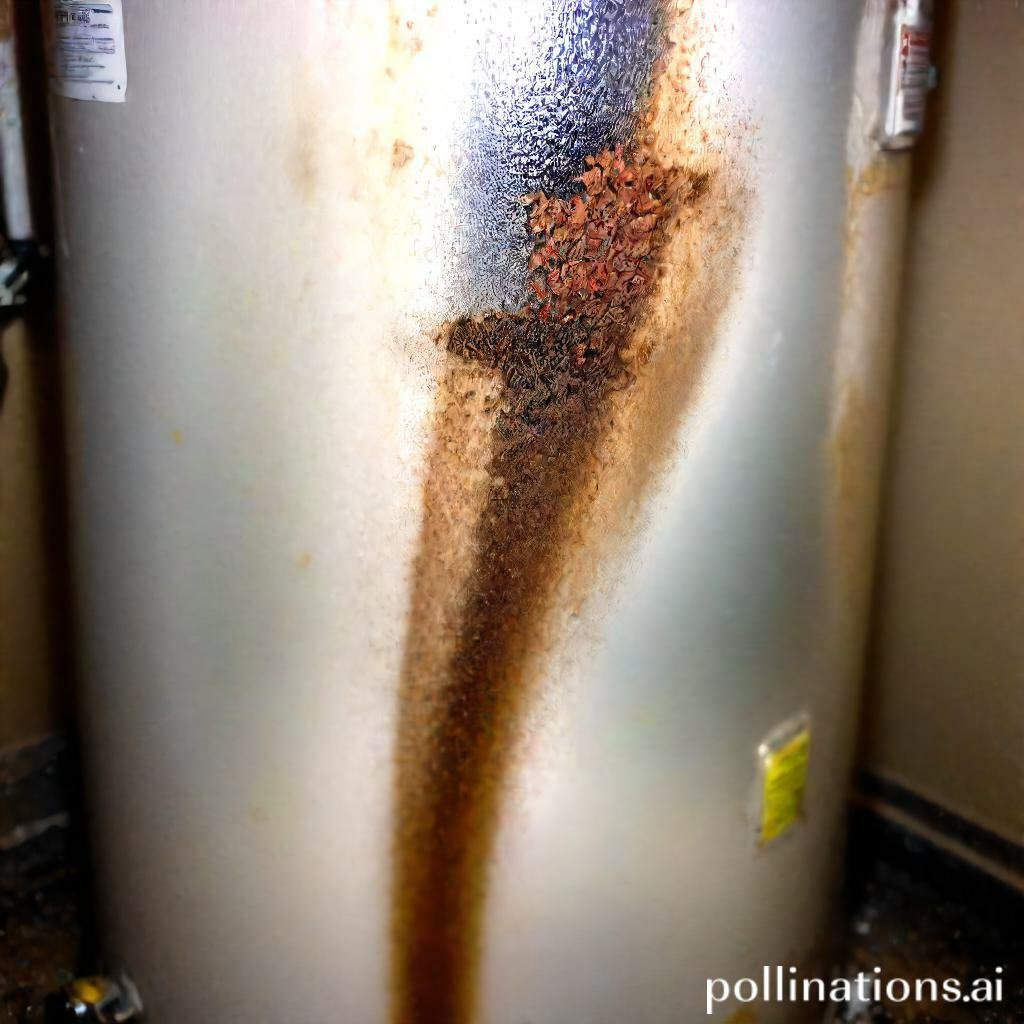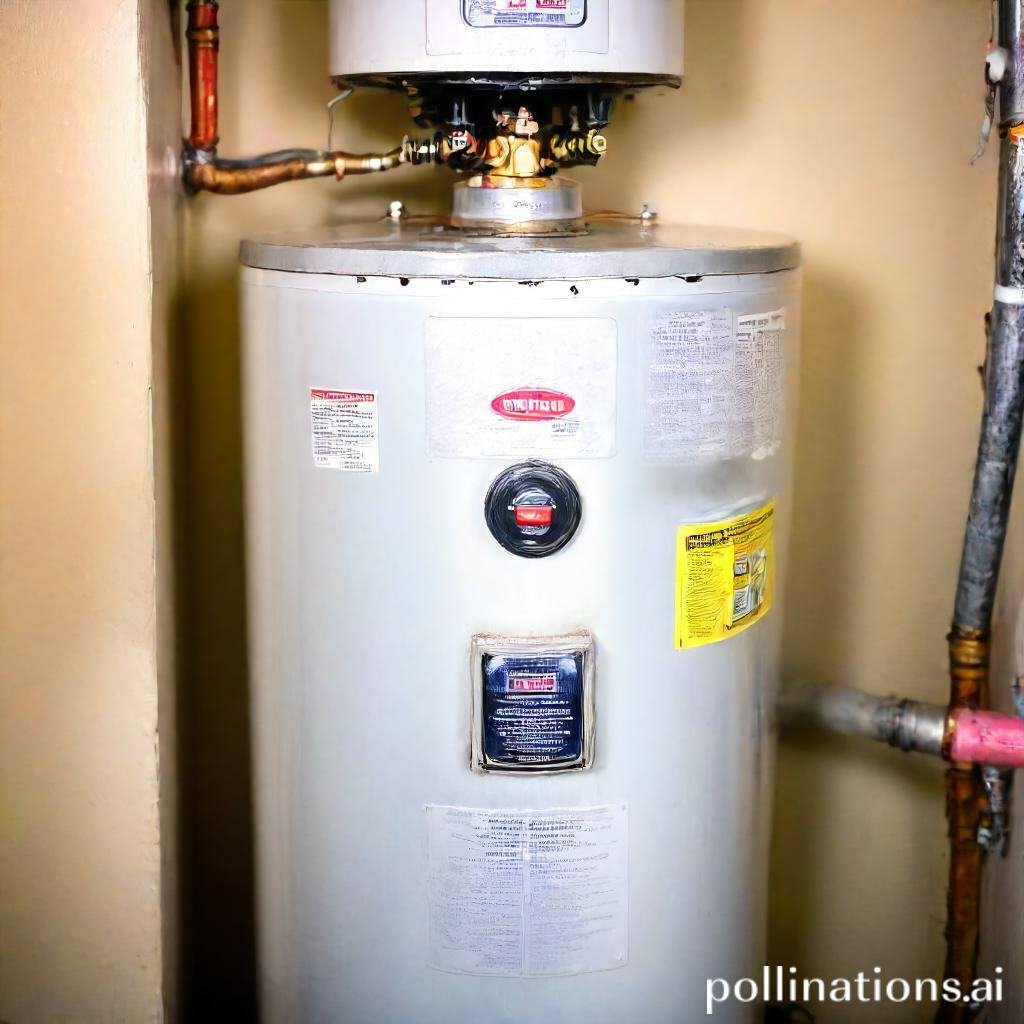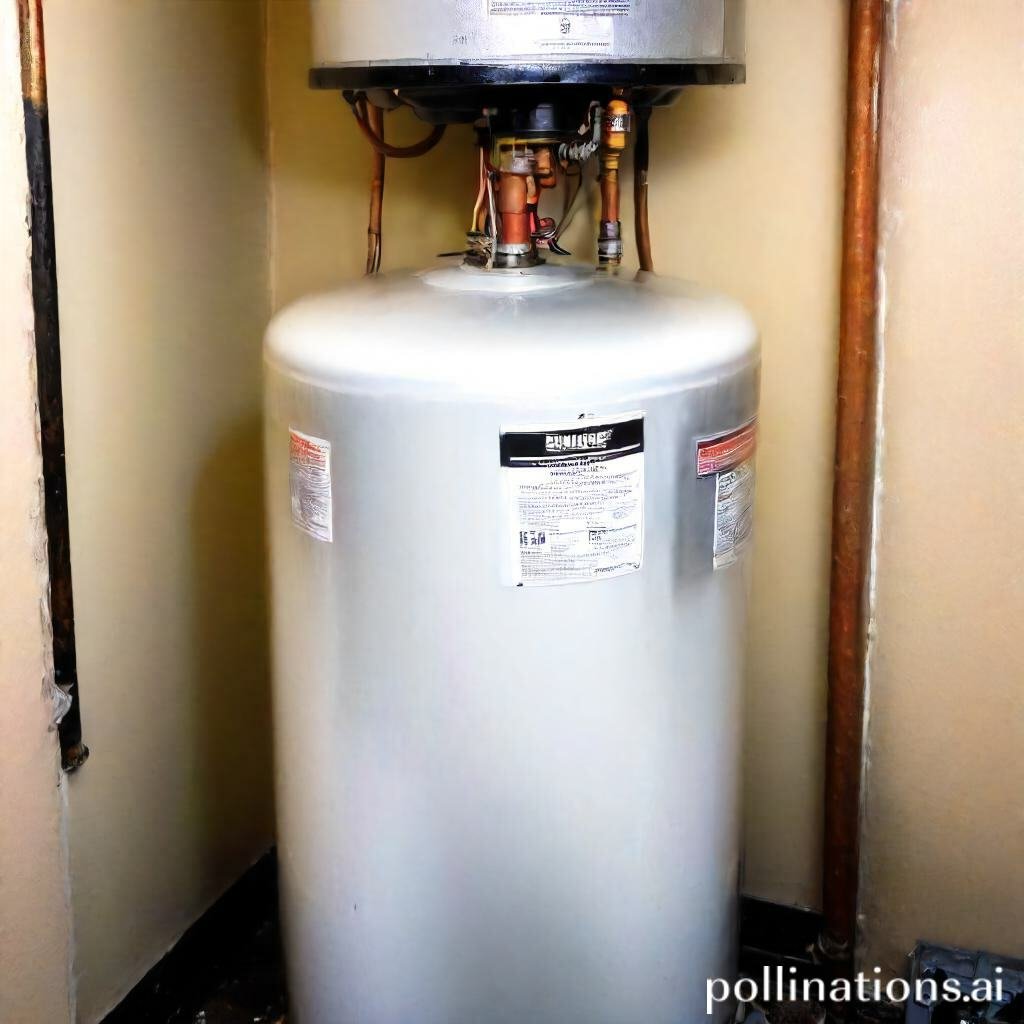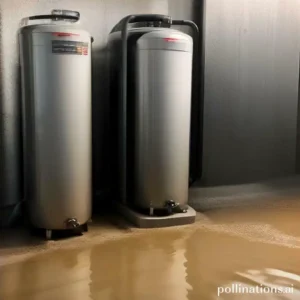
II. Sediment buildup can cause corrosion, overheating, and decreased efficiency in water heaters.
III. Regular maintenance, including flushing the tank and installing a sediment filter, can help extend the lifespan of a water heater.
Sediment buildup in water heaters can significantly impact their lifespan. Over time, minerals and debris can accumulate at the bottom of the tank, causing various issues.
Sediment acts as an insulator, making it harder for the heating element to transfer heat to the water. This can lead to increased energy consumption and higher utility bills.
Additionally, sediment can corrode the tank and other components, leading to leaks and costly repairs. Regular maintenance, such as flushing the tank, can help prevent sediment buildup and extend the lifespan of your water heater.
Causes of Sediment Buildup in Water Heaters
In this section, we will navigate the causes of sediment buildup in water heaters and discuss the factors that contribute to this issue.
1. Formation of sediment in water heaters
Water heaters are prone to sediment buildup due to the presence of minerals and impurities in the water supply. As water is heated, these minerals and impurities form sediments at the bottom of the tank. Over time, the sediment layer thickens, reducing the efficiency and performance of the water heater.
For example, calcium and magnesium ions found in hard water can react with heat to form calcium carbonate and magnesium hydroxide deposits. These deposits settle at the bottom of the tank, creating a layer of sediment.
2. Factors that contribute to sediment buildup
Several factors contribute to the accumulation of sediment in water heaters, including:
- Water hardness: Hard water, containing high levels of minerals, accelerates sediment formation.
- Sediment trap: Improperly installed or missing sediment traps can allow debris and sediment to enter the water heater.
- Temperature setting: Higher water temperatures can promote sediment precipitation.
- Age of the water heater: Older water heaters are more susceptible to sediment buildup.
To prevent sediment buildup and maintain the efficiency of your water heater, regular maintenance is crucial. Flushing the tank annually can help remove accumulated sediment and prolong the lifespan of the appliance.
| Factors | Effects |
|---|---|
| Water hardness | Accelerated sediment formation |
| Sediment trap | Debris and sediment entering the water heater |
| Temperature setting | Promotion of sediment precipitation |
| Age of the water heater | Increased susceptibility to sediment buildup |
Effects of Sediment on Water Heater Lifespan
Sediment build-up in a water heater can have detrimental effects on its overall lifespan. Discerning these effects is crucial for maintaining an efficient and long-lasting water heater.
1. Reduced efficiency of water heater
One of the primary consequences of sediment accumulation is a reduction in the efficiency of the water heater. As sediment builds up at the bottom of the tank, it creates a barrier between the heating element and the water. This insulation impedes the transfer of heat, forcing the water heater to work harder and consume more energy to achieve the desired temperature. Consequently, the efficiency of the water heater decreases, leading to higher energy bills and wasted resources.
2. Increased energy bills
Sediment build-up not only affects the efficiency of the water heater but also results in increased energy bills. As mentioned earlier, the insulation caused by sediment prevents effective heat transfer. This inefficiency forces the water heater to operate for longer periods, consuming more energy to heat the water to the desired temperature. The continuous operation leads to a significant rise in energy consumption, ultimately reflected in higher monthly bills.
3. Corrosion of water heater tank
Sediment accumulation can also contribute to the corrosion of the water heater tank. The sediment particles contain minerals and impurities, which can react with the tank material and cause corrosion. Over time, this corrosion weakens the tank, making it more susceptible to leaks or even complete failure. Regular maintenance and sediment flushing are essential to prevent the corrosion process and extend the lifespan of the water heater.
4. Shortened lifespan of water heater
If left unchecked, sediment build-up can significantly shorten the lifespan of a water heater. The combination of reduced efficiency, increased energy bills, and potential corrosion can put excessive strain on the system, causing premature failure. By taking proactive measures to minimize sediment accumulation, such as regular flushing and installing a sediment filter, homeowners can prolong the lifespan of their water heaters and avoid costly replacements.
Signs of Sediment Buildup in Water Heaters
Water heaters are essential for providing hot water in our daily lives. Despite this, over time, sediment buildup can occur, leading to various issues. Vital to be aware of the signs of sediment buildup in water heaters to prevent further damage and ensure efficient functioning.
Noises from Water Heater
One of the common signs of sediment buildup in water heaters is the presence of strange noises. If you hear popping, banging, or rumbling sounds coming from your water heater, it may indicate sediment buildup. This occurs when the sediment settles at the bottom of the tank and gets heated, causing the water to boil and create noise.
Discolored Water
Another sign of sediment buildup is discolored water. If you notice a brown or rusty tint in your hot water, it could be due to sediment accumulation. As the sediment mixes with the water, it can alter its color and quality. This is not only unappealing but also indicates the need for maintenance.
Reduced Hot Water Supply
Sediment buildup can also result in a reduced hot water supply. As the sediment accumulates at the bottom of the tank, it takes up space that could be used for hot water storage. This leads to a decreased capacity of the water heater, causing less hot water to be available for your needs. If you consistently experience insufficient hot water, sediment buildup could be the culprit.
Leaking Water Heater
In severe cases, sediment buildup can even cause water heater leakage. As the sediment settles and hardens at the bottom of the tank, it can create cracks or damage the internal components. This can result in water leakage, which not only affects the performance of the water heater but also poses potential water damage risks to your property.
To ensure the longevity and optimal performance of your water heater, it is crucial to address sediment buildup promptly. Regular maintenance and flushing of the water heater can help prevent sediment accumulation and extend its lifespan. If you notice any of these signs, it is recommended to consult a professional plumber to assess the situation and provide appropriate solutions.

Preventing Sediment Buildup in Water Heaters
1. Flushing water heater regularly
Flushing your water heater regularly is an essential step in preventing sediment buildup. Over time, minerals and debris can accumulate at the bottom of the tank, causing reduced efficiency and potential damage to the heater. By flushing the water heater, you can remove this sediment and ensure optimal performance.
2. Installing a water softener
Another effective way to prevent sediment buildup is by installing a water softener. Hard water contains high levels of minerals, such as calcium and magnesium, which can contribute to sediment formation. A water softener works by removing these minerals, resulting in cleaner water and reduced sediment in your water heater.
3. Using a sediment filter
Using a sediment filter is a simple yet effective method to prevent sediment buildup in your water heater. These filters are designed to trap sediment particles, preventing them from entering the tank. Regularly replacing or cleaning the filter will ensure its effectiveness in keeping your water heater free from debris.
4. Reducing water temperature
Lowering the water temperature in your water heater can also help prevent sediment buildup. Higher temperatures can accelerate mineral precipitation and sediment formation. By setting the temperature to a moderate level, you can reduce the risk of sediment accumulation and extend the lifespan of your water heater.
| Method | Effectiveness |
|---|---|
| Flushing water heater regularly | High |
| Installing a water softener | Very high |
| Using a sediment filter | Moderate |
| Reducing water temperature | Moderate |

Removing Sediment Buildup in Water Heaters
Sediment buildup in water heaters can lead to reduced efficiency and potential damage to the unit. Regular maintenance is essential to ensure optimal performance and prolong the lifespan of your water heater. Here are some steps you can take to remove sediment buildup:
1. Draining the Water Heater Tank
Start by turning off the power supply to the water heater. Locate the drain valve at the bottom of the tank and attach a hose to it. Place the other end of the hose in a suitable drainage area, such as a floor drain or outside. Open the drain valve and allow the water to flow out until it runs clear. This will help flush out any loose sediment that has settled at the bottom of the tank.
2. Flushing the Water Heater Tank
In addition to draining the tank, flushing it can further remove stubborn sediment that may be clinging to the walls. To do this, close the drain valve and carefully turn on the cold-water supply to the tank. Allow the water to flow into the tank and then out through the drain valve, creating a flushing action. Repeat this process a few times until the water runs clear.
3. Hiring a Professional Plumber
If you’re unsure about performing maintenance on your water heater or if the sediment buildup is severe, it’s best to hire a professional plumber. They have the knowledge and experience to safely and effectively remove sediment buildup, ensuring your water heater operates efficiently and reliably.
Regularly removing sediment buildup from your water heater is crucial for maintaining its performance and extending its lifespan. By complying with these steps or seeking professional assistance, you can ensure that your water heater continues to provide you with hot water when you need it.
| Step | Description |
|---|---|
| 1 | Draining the water heater tank |
| 2 | Flushing the water heater tank |
| 3 | Hiring a professional plumber |
Bottom Line
Relating to the lifespan of your water heater, sediment buildup can have a significant impact. Over time, sediment can accumulate at the bottom of your tank, causing corrosion and reducing the efficiency of your heater. This can lead to higher energy bills and a shorter lifespan for your appliance.
To prevent sediment buildup, it’s important to flush your water heater regularly and consider installing a sediment filter. Additionally, if you notice any signs of sediment buildup, such as discolored water or strange noises coming from your tank, it’s important to address the issue promptly to avoid further damage.
By taking steps to prevent sediment buildup and addressing any issues promptly, you can help extend the lifespan of your water heater and ensure that it continues to provide reliable hot water for years to come.
Read More:
1. Best Practices For Sediment Removal In Tankless Water Heaters
2. Diy Sediment Removal Without Draining Water Heater










